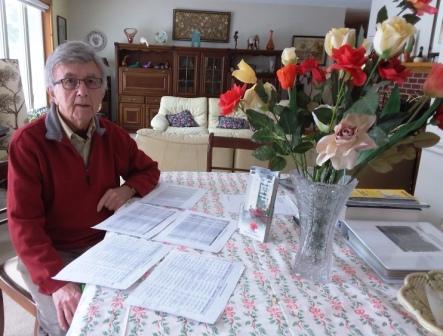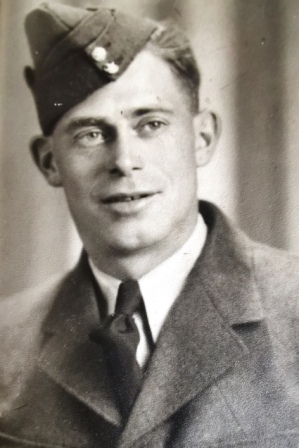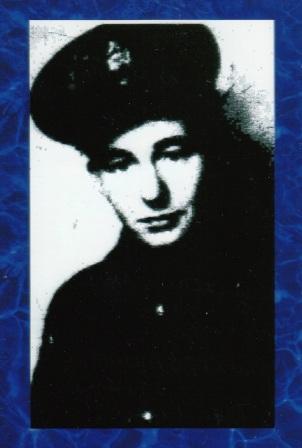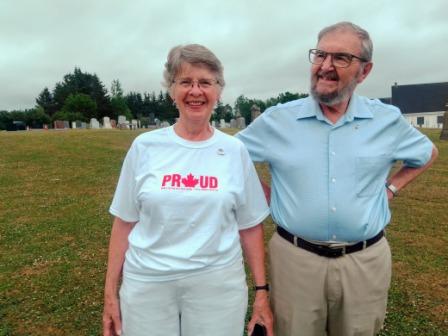February 12, 2021. In earlier postings, the observations made by Harold Keith HOWATT of Augustine Cove towards the end of WW1 and his time in Mehlem, Germany with the Canadian Army of Occupation were recorded.
Howatt, who was in the 8th Canadian Siege Battery, noted that on January 28, 1919 the Canadian Army of Occupation was relieved by the British 84th Brigade Royal Garrison Artillery. Canadian troops moved back to Belgium in eager anticipation of demobilization and return home.

Harold Keith Howatt. (Photo courtesy of South Shore United Church)
This posting continues his observations in the last months of his military service, beginning with January 28, 1919. “…Left Mehlem this morning for Bonn, loaded the guns on the railway tracks, and at about five o’clock we pulled out for Belgium, thus ‘winding up’ our ‘Watch on the Rhine’. We travelled all night, in box cars, and arrived in a town called Andenne about six o’clock the next morning…” It would have been a very cold ride in an unheated box car on the train in January! Brrrr….

Google map showing the approximate train route taken by Howatt’s unit.
(Note: Andenne, Belgium is a small town that saw over 200 of its civilian population massacred by the Germans in 1914: see https://en.wikipedia.org/wiki/Andenne)
The situation regarding comfort didn’t improve, as Howatt recorded on January 29, 1919. “…We unloaded the guns this morning, finishing about one o’clock….. Then we came out to this place, where we were put in an old house with no fires in it. The language used by the troops was lurid enough to warm the air…” Howatt’s reference to ‘this place’ was Sclayn, just outside Andenne. (See https://fr.m.wikipedia.org/wiki/Sclayn)
The attempt to get warm continued on January 30, 1919. “…Woke up this morning to find the windows covered with frost. Gee! but it was cold, and the stove wouldn’t burn. We spent nearly all day trying to get a stove fixed up that would burn….”
Howatt reported no improvement on January 31, 1919. “…Weather still cold, and fire sulky….”
On February 1, 1919, Howatt writes that “…This is the slowest place I ever struck, not life enough to satisfy a monk….”
Misery for the unit continued, as noted on February 2, 1919… “…In charge of the guard today. No fuel for the guard room. We were either freezing or being smothered with smoke all day….”
On February 4, 1919, Howatt reported that “…The weather is getting much colder, days of brilliant frosty sunlight, and keen frosty nights….”
On February 5, 1919, Howatt met a friend, commenting that “…Still clear and cold. Perry came to see us this afternoon. He is in Andenne, expects to leave for La Harve the first of next week. His unit is going home with the 3rd Division. Lucky beggar!...” (Note: Unfortunately, Perry is unknown. The only known Perry was George Albert Perry who was killed in 1917.)
By February 6, 1919, Howatt was itching to leave. “…Fine and cold. No definite news on how long we will stay here…”
After several days of inactivity, except for the odd walk into town, Howatt recorded, on February 7, 1919, that “…This morning we had to carry the Observer’s stories down to Mr. Freeman’s billet, and this afternoon I helped him sort them over. This evening MacNeil and I walked into Ardenne to see Perry again before he left. He is living with a private family with ‘beaucoup mademoiselles’ and having a great time….” (Note: Mr. Freeman is unknown. MacNeil may be Robert Burns MACNEILL, who was born on PEI, but lived in Sydney, Nova Scotia at the time of enlistment.)
Finally, Howatt’s February 8, 1919 entry noted some activity. “...Parade this morning for demob. Statistics, dispersal area, length of service, and so forth….” You can imagine that Howatt was anxious to be included in the first group to be demobilized.

Postcard from Namur. (Courtesy of the H. Howatt collection)
It was still a waiting game for Howatt, with time for some sightseeing, as he wrote on February 9, 1919. “…Today a guard platoon consisting of an officer, 2 sergeants, 2 corporals, 2 bombardiers, and 42 men went to Namur to do guard duty. MacNeil and I got a pass and went with them. First we went to the YMCA and got a book each at the lending library. Then we climbed up onto the hill where the citadel is situated and walked all over the place. Came home by train…”
In 1914, Namur was invaded by the Germans in order to use the Meuse valley as a route into France. On August 21, 1914, they bombarded the town with no warning, killing several people. The citadel mentioned by Howatt fell after three days, and the town was occupied by the Germans until the end of the war. (For more info on Namur, see https://en.wikipedia.org/wiki/Namur)
The next day, his hopes were raised, as he writes on February 10, 1919 about “…rumours that we may leave here before long…”
Over the next few days nothing much happened, but on February 14, 1919 he wrote about an altercation in the house they were staying in. “…On guard duty today. The prisoners in the guardroom had some wine and there was a sort of a row. The old lady got an idea into her head that someone had smashed up some of her furniture, so she got an officer and he had the prisoners lined up for her to identify the culprits. I do not think it was the prisoners, though, who did break the window and chairs…” It’s not clear who the prisoners were, but most likely they were German prisoners of war who had not yet been released.
The first hint that Howatt’s hopes of going home may not be realized occurred on February 15, 1919. “…Came off guard this morning, was glad to get away…..Heard today that it has come through on orders that I have been promoted ‘corporal’ and posted to the 12th Battery. Hope I do not have to go….”
On February 16, 1919, Howatt recorded that “…This morning the Major held a sort of investigation into the trouble in the guard room the other day, but nothing was found out...” This suggests that Howatt’s guess that the prisoners were not responsible for the damage was likely correct.
Discouragement sets in by February 18, 1919. “…Nothing doing, no word of moving. All there is to do is go for a walk, come home, read for a while, and go to bed...” A year earlier a soldier might have been happy for this type of day, but with the war ended there is an impatience to leave.
On February 19, 1919, his frustration is voiced. “…The same old thing in the same old way, nothing to do, nowhere to go. Oh! To be out of this country….”
Things took a downward turn as passes for leaves were cancelled. The Spanish flu had reached the area, resulting in lockdown measures similar to what we have experienced over the past year due to Covid-19.
On February 22, 1919, Howatt wrote “…No church service today. The cinemas are closed and all meetings are prohibited unless held in the open. This is on account of the flu, which is very prevalent around here...”
The Regiment did not escape the flu, as on February 25, 1919, Howatt noted that “…This evening I had to go on guard as McCann took sick…” McCann was in charge of the guards.
On Friday, February 28, 1919, Howatt glumly recorded that “…This morning, MacIntosh came up and told me that I had to go to the 12th battery immediately. Did I want to go – not much. So I had to fly around, get some new clothes and so forth, and turn over the keys of the store boxes to Mr. Freeman…”
He left the next day for Mons, Belgium, along with “…Skirrow, Morrissey, and Goodwin…” Harold Howatt’s wartime service was not over yet!
Can you help identify the names Freeman, Goodwin, Perry, MacIntosh, MacNeil, McCann, Morrissey, and Skirrow? If so, please let Pieter know. You can email him at dariadv@yahoo.ca, comment on the blog, or tweet to @researchmemori1.
Missed the previous two postings about the observations of Harold Howatt? See here:
You are also invited to subscribe to our YouTube Channel: On The War Memorial Trail With Pieter Valkenburg: https://www.youtube.com/channel/UCJ591TyjSheOR-Cb_Gs_5Kw.
© Daria Valkenburg

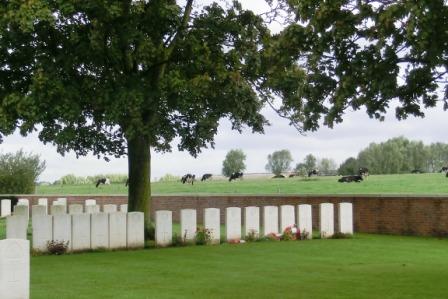
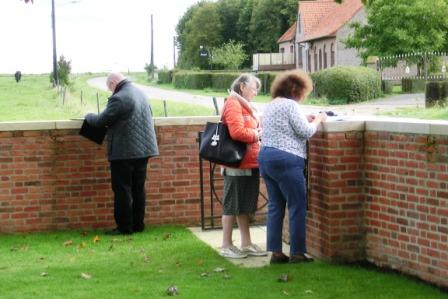








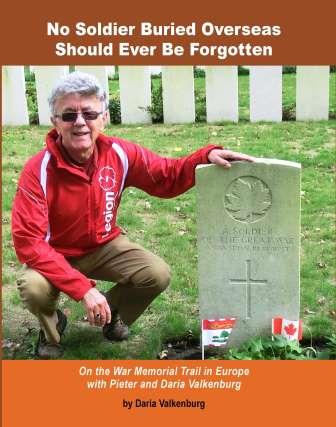 4 countries, 6 weeks, 7,000 km – an unforgettable war memorial journey in Europe….
4 countries, 6 weeks, 7,000 km – an unforgettable war memorial journey in Europe….